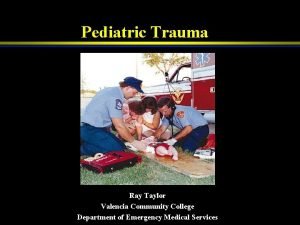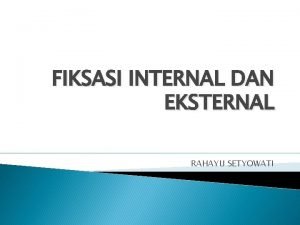Periprosthetic Femur Fractures Outcomes and Fixation Zachary C

- Slides: 1

Periprosthetic Femur Fractures Outcomes and Fixation Zachary C. Lum DO, Rene A. Monzon BS, Alvin K. Shieh MD, Mark A. Lee MD, John P. Meehan MD Department of Orthopaedic Surgery DEPARTMENT OF ANESTHESIOLOGY AND PAIN MEDICINE INTRODUCTION Plate Controversy exists in implant choice during surgical stabilization of periprosthetic femur fractures. We sought to determine if nail, plate, or combination of both would have an effect on union or nonunion, union time, or time to weight bear. METHODS Patients with ICD 9 or ICD 10 diagnosis coding for periprosthetic fracture around hip or knee (996. 44, M 97. 0 xx, M 97. 1 xx) were identified. Patient demographics were obtained including age, sex, height, weight, BMI, ASA score, surgical time and length of hospitalization. Patients were radiographically evaluated for bony union and time to union. Time to weight bearing was calculated. Patients were grouped into treatment cohorts: plate only, nail only, combination or none. Plate Nail Both None N 22 13 3 12 Age 68 71 83 75 Sex (female) 13 7 17 11 BMI 28. 2 33. 2 25. 4 28. 4 ASA 2. 61 2. 84 3. 6 Surg Time (hrs) 3. 5 3. 2 3. 4 3. 6 LOS (d) 7. 0 8. 6 4. 9 6. 4 METHODS Results • 50 patients underwent treatment • Time to union was 23 weeks for plate, for periprosthetic femur fractures from 2014 to 2018. • Patients were categories into groups: 22 plate, 13 nail, 3 both, 12 none. • Overall nonunion rate was 18%. • There was no difference between nonunion and union in any of the groups. 40. 7 weeks for nail, 44 weeks for both, 33. 5 weeks for both. • Time to weight bearing as tolerated was 12. 8 weeks for the plate group, 21. 4 weeks for nail, 29 weeks for both, 18 weeks for none. • The plate group had significantly less time to weight bearing compared with the nail, or both. Plate Nail Both None Nonunions 3 4 0 2 Union Time 32 wks 40. 7 wks 44 wks 33. 5 wks Time to WBAT 12. 8 (P<0. 01) 21. 4 29 18 DISCUSSION • The original cohort was sizeable but there were quite a few patients that were excluded due to not meeting our specific criteria. • Moving forward we will expand the ICD codes, as well as CPT codes to add more patients to the cohort. CONCLUSION -With our small sample size, we were unable to discover a difference in union rates or union times with any of our treatment arms. -Plate utilization resulted in the fastest time to weight bearing. - Although nail and plate combinations had the longest time to union and weight bearing, it had the lowest length of stay, similar surgical times and no nonunions REFERENCES • Kanabur P 1, Sandilands SM, Whitmer KK, Owen TM, Coniglione FM, Shuler TE. Nail and Locking Plate for Periprosthetic Fractures. J Orthop Trauma. 2017 Dec; 31(12): e 425 -e 431. • Liporace FA, Yoon RS. Nail Plate Combination (NPC) Technique for Native and Periprosthetic Distal Femur Fractures: A Technical Trick. Journal of Orthopaedic Trauma 2018 Publish Ahead of Print DOI: 10. 1097/BOT. 0000001332

